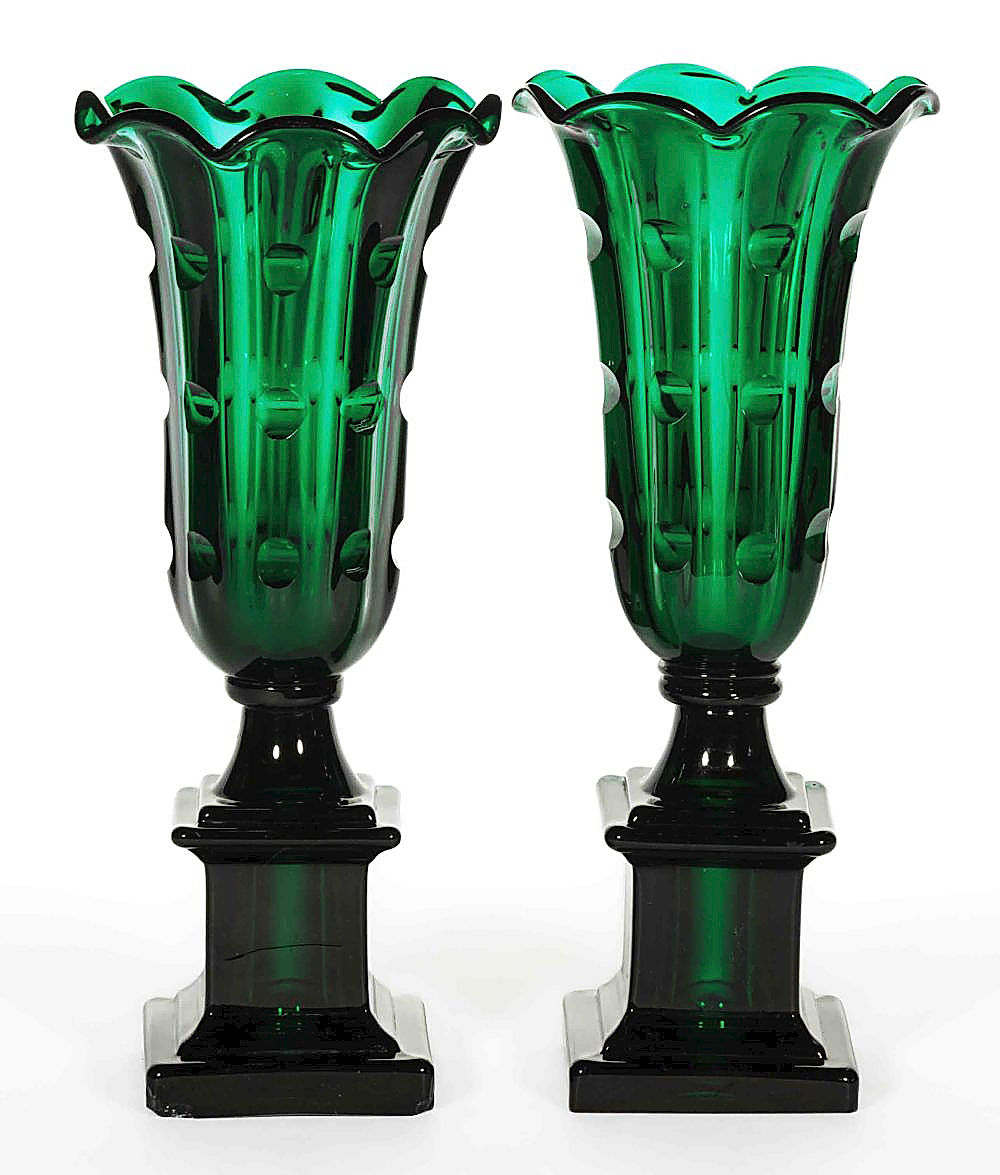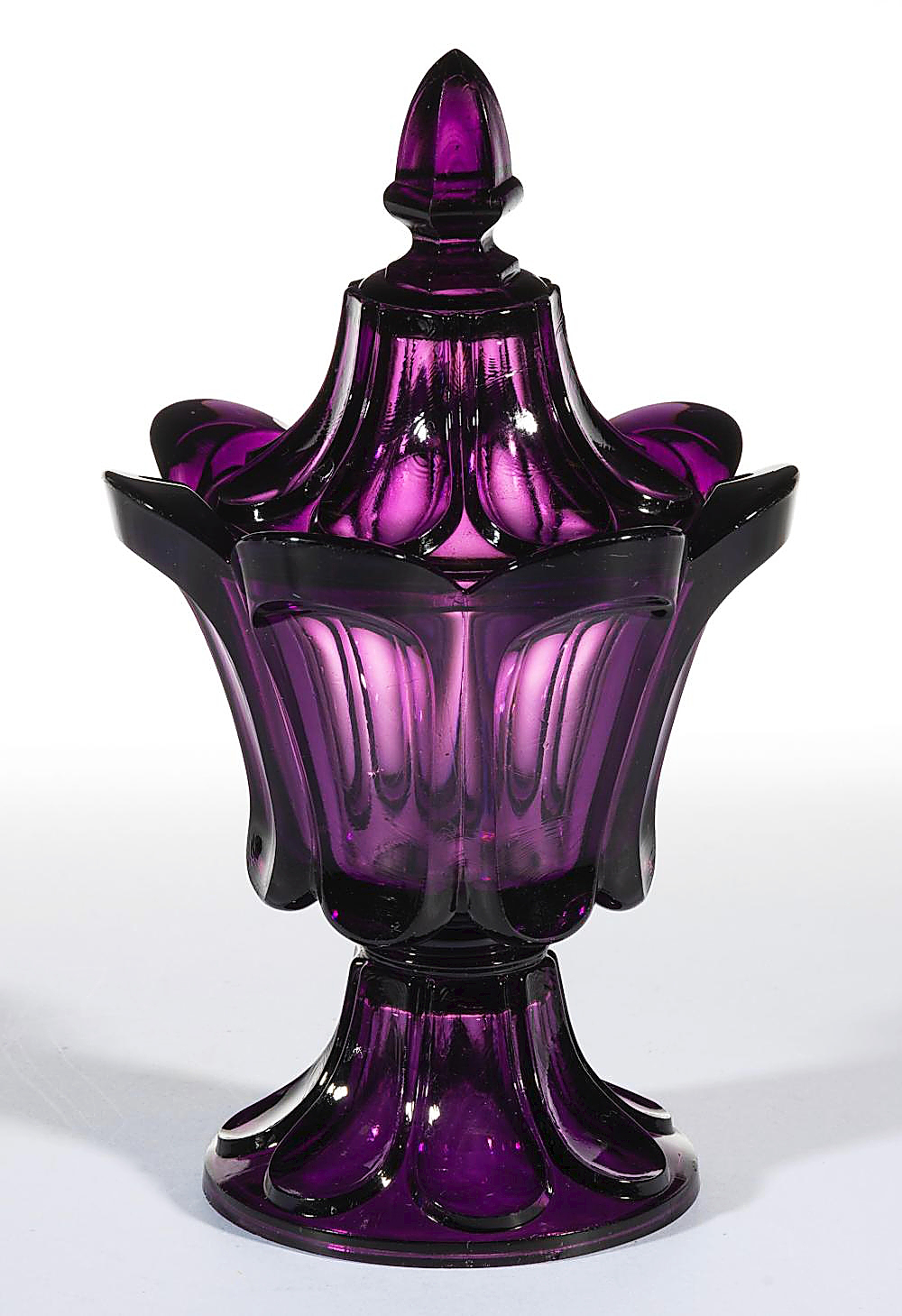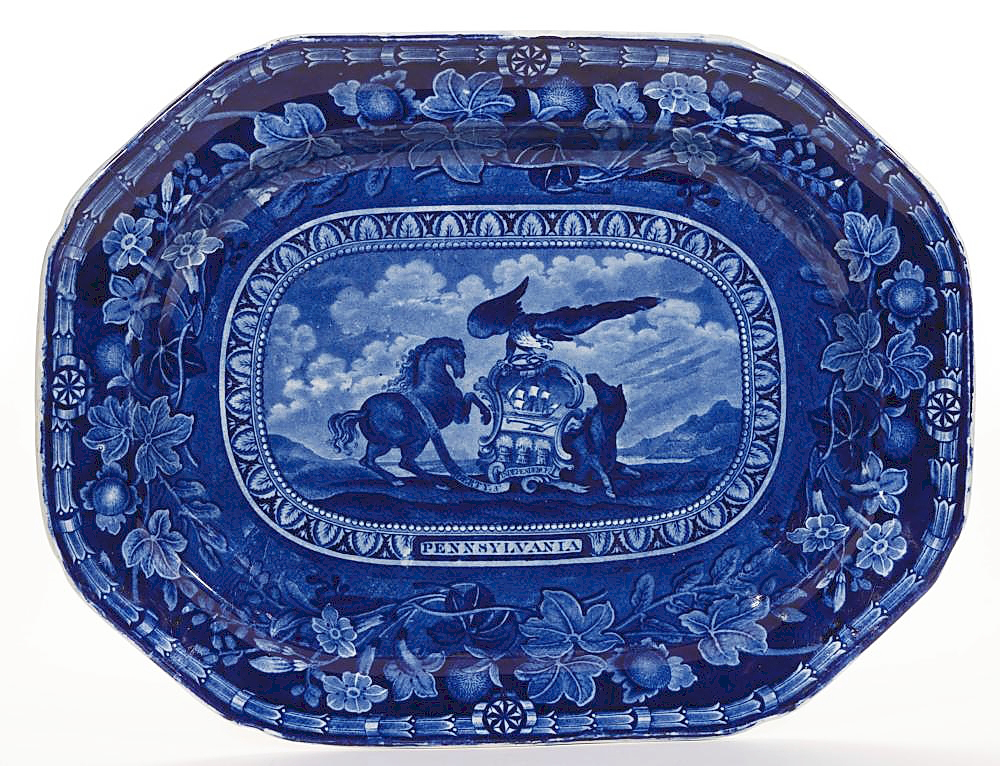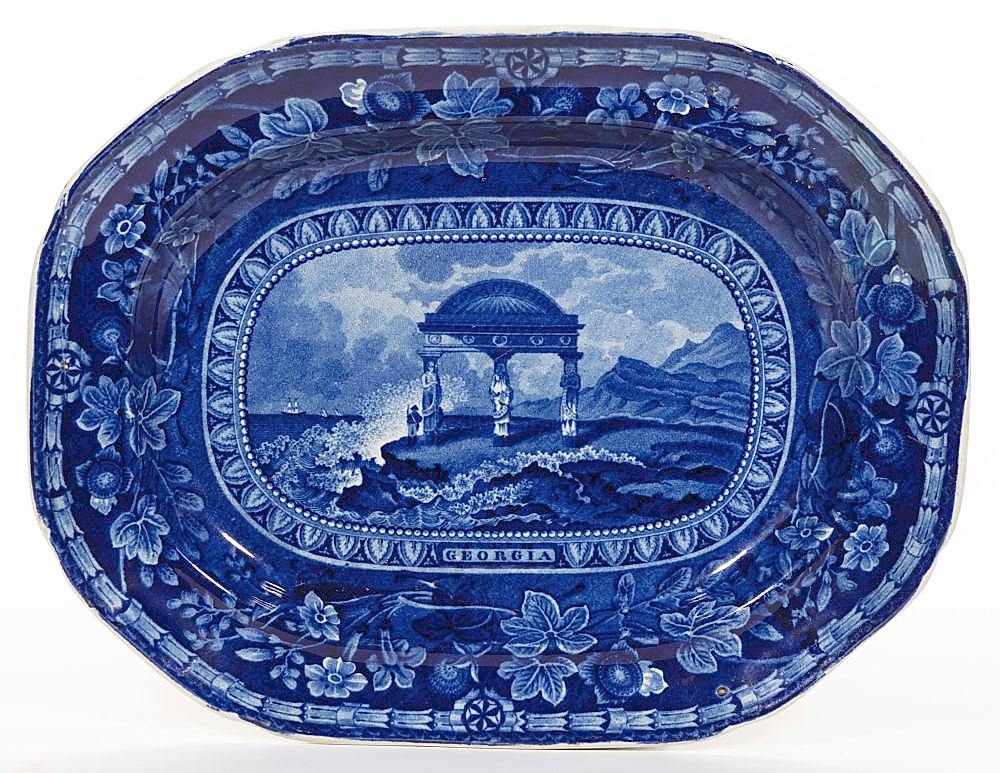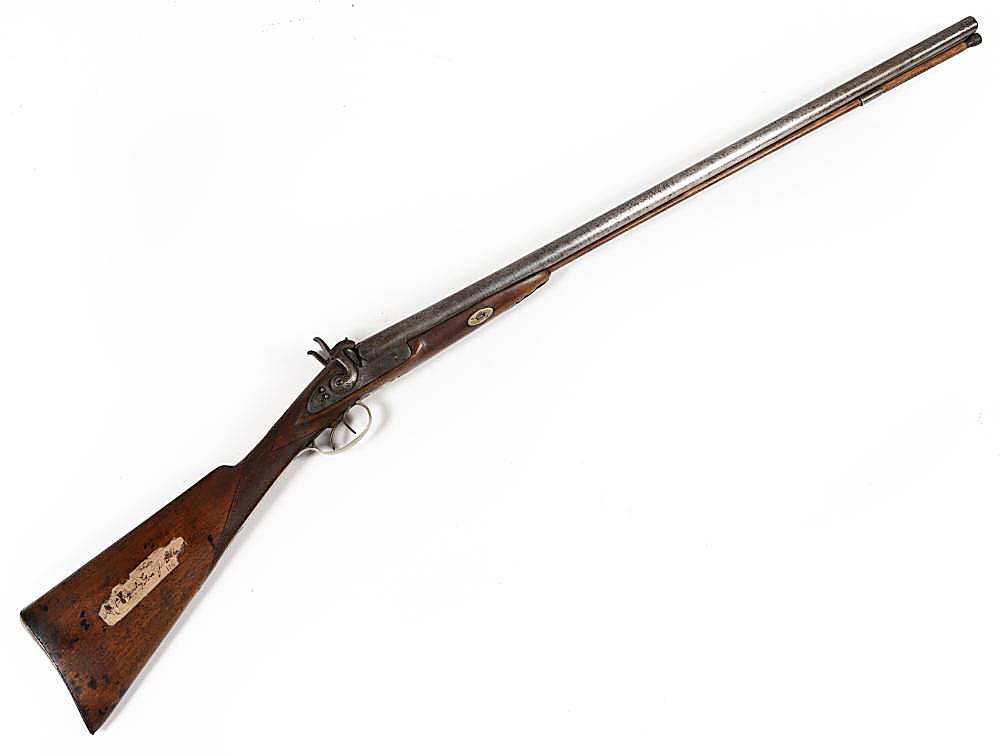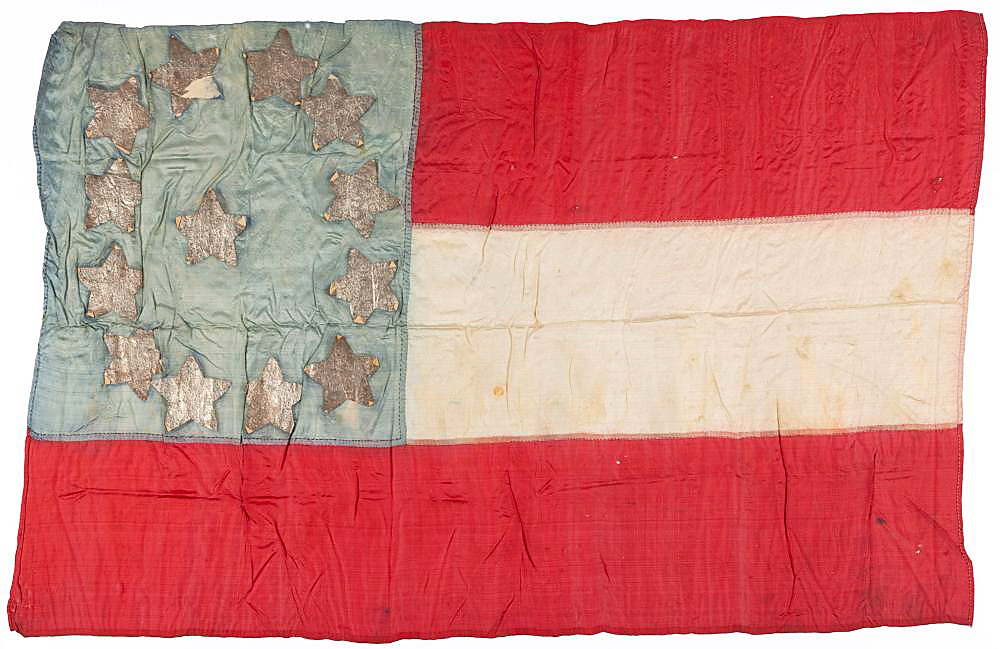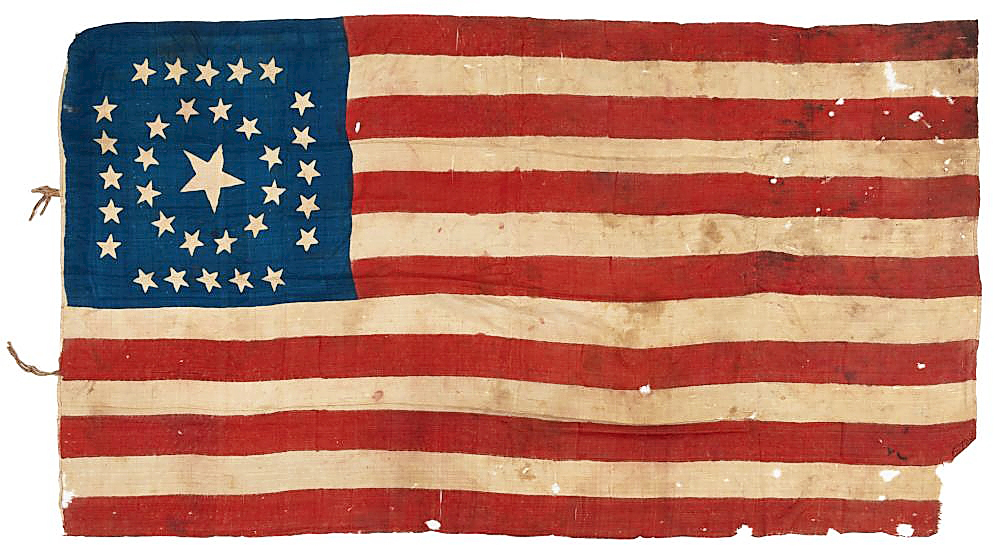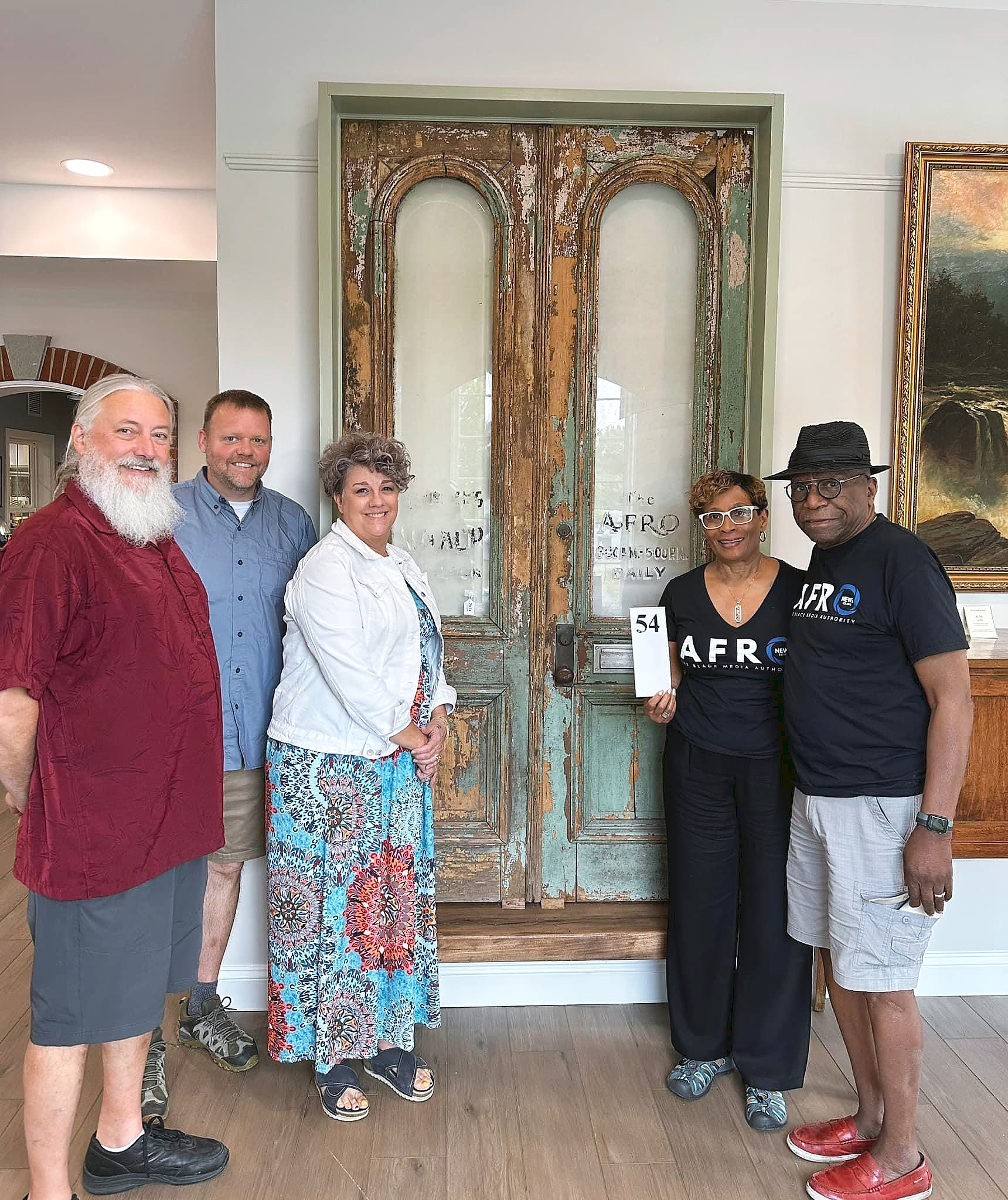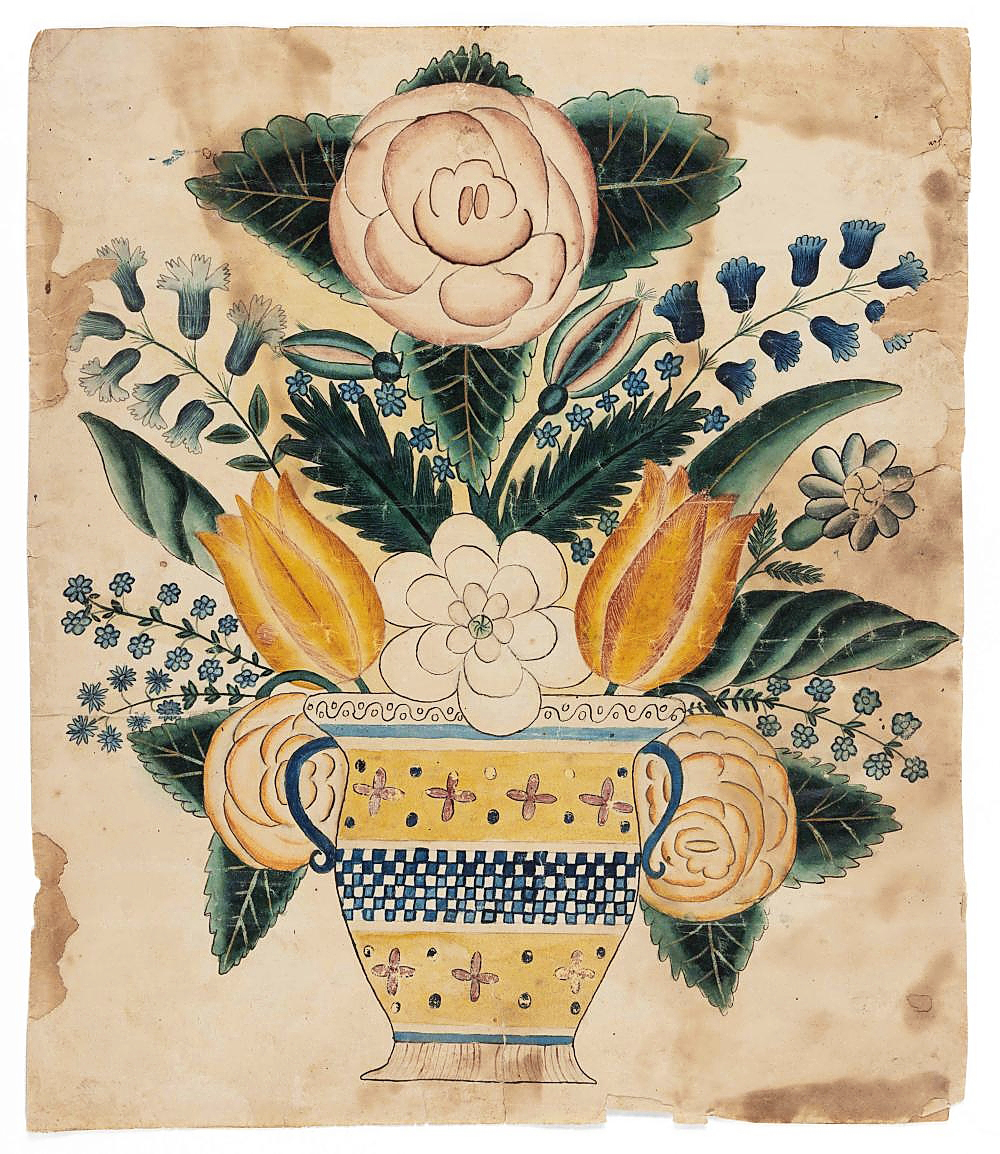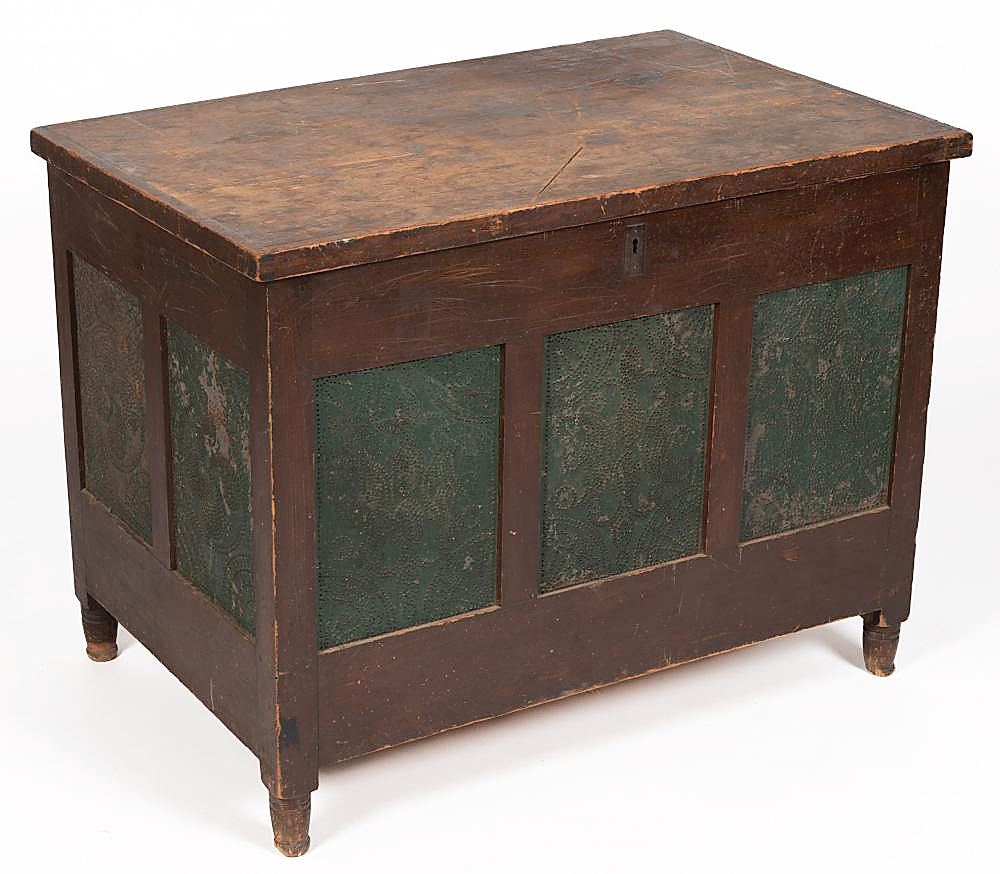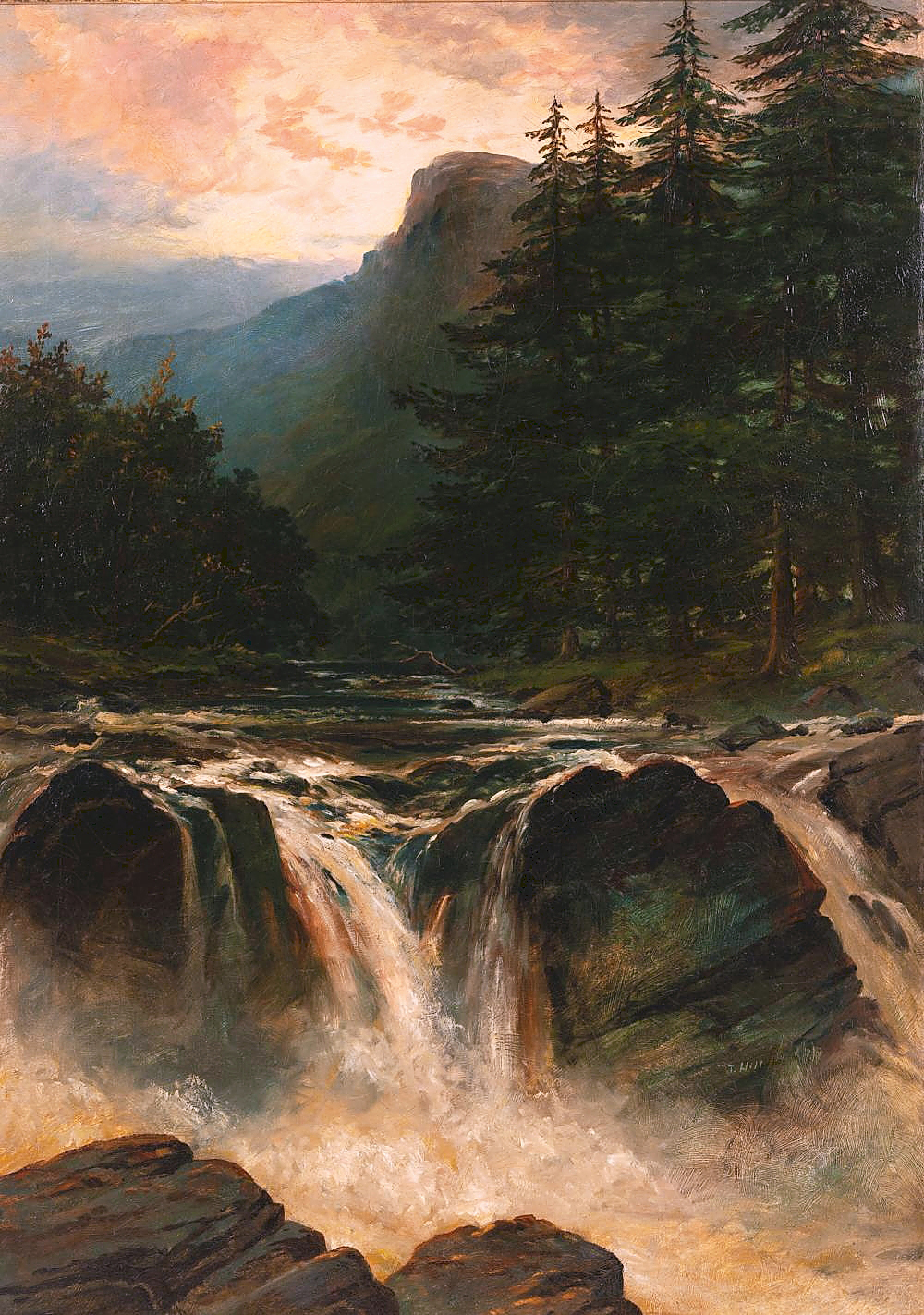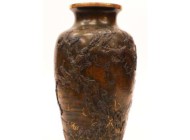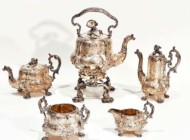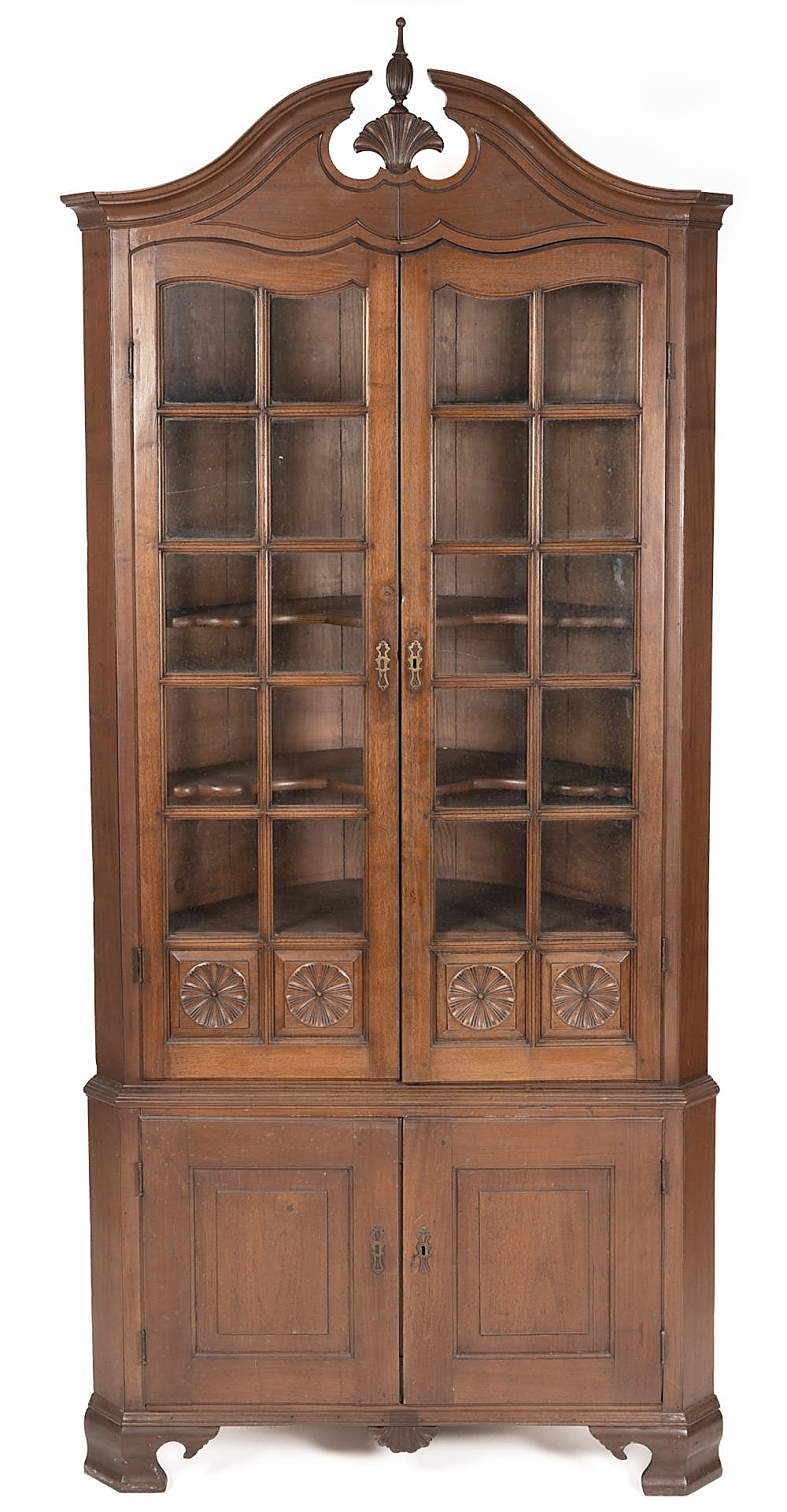
Early provenance, a rare form and associations to one of the most sought-after Southern cabinetmaking shops drove the price of this Chippendale carved walnut corner cupboard with history in the Stephenson family of Southampton Co., Va. A private collector, bidding online by absentee bid, outbid a Virginia institution, for a price of $96,000. It was the highest price in the three-day event ($3/5,000).
Review by Madelia Hickman Ring; Photos Courtesy Jeffrey S. Evans & Assoc.
MOUNT CRAWFORD, VA. — More than 1,400 lots of glassware and premier Americana were auctioned at Jeffrey S. Evans & Associates (JSE&A) over the course of three days, June 15-17. With all glass lots trading careful hands, the three-day event saw an overall sell-through rate of more than 99 percent.
“It was a very strong sale overall,” said Will Kimbrough, JSE&A’s vice president and department head of Americana and fine art. “It was a perfect storm on the corner cupboard, for sure, with two highly motivated bidders, each with deep pockets.”
Kimbrough was referring to the sale’s top lot, a rare Roanoke River Basin Chippendale carved walnut corner cupboard, which had descended in the Stephenson family of Southampton County, Va., near the state’s border with North Carolina. The late Eighteenth Century case piece featured yellow pine secondary woods as well as other characteristics of the “WH” shop — also in Southampton County — that are discussed in John Bivins’ The Furniture of Coastal North Carolina, 1700-1820 (MESDA, 1988) and included the use of the tympanum as a decorative field, the unusually shaped profile of the upper mullions in the case doors and the implementation of architecturally carved blind panels at the bottom of the upper case. A private collector outbid a Virginia institution, winning it for $96,000.
“For the private collector, the Southampton County history is really important. The museum he outbid also has regional Virginia furniture in their mission so in the case of this, that equated to zeros [in the price]. The seller bought it a few months ago at an online-only auction being held for the family, for $160. She knew it was good but did not know how good it was.”
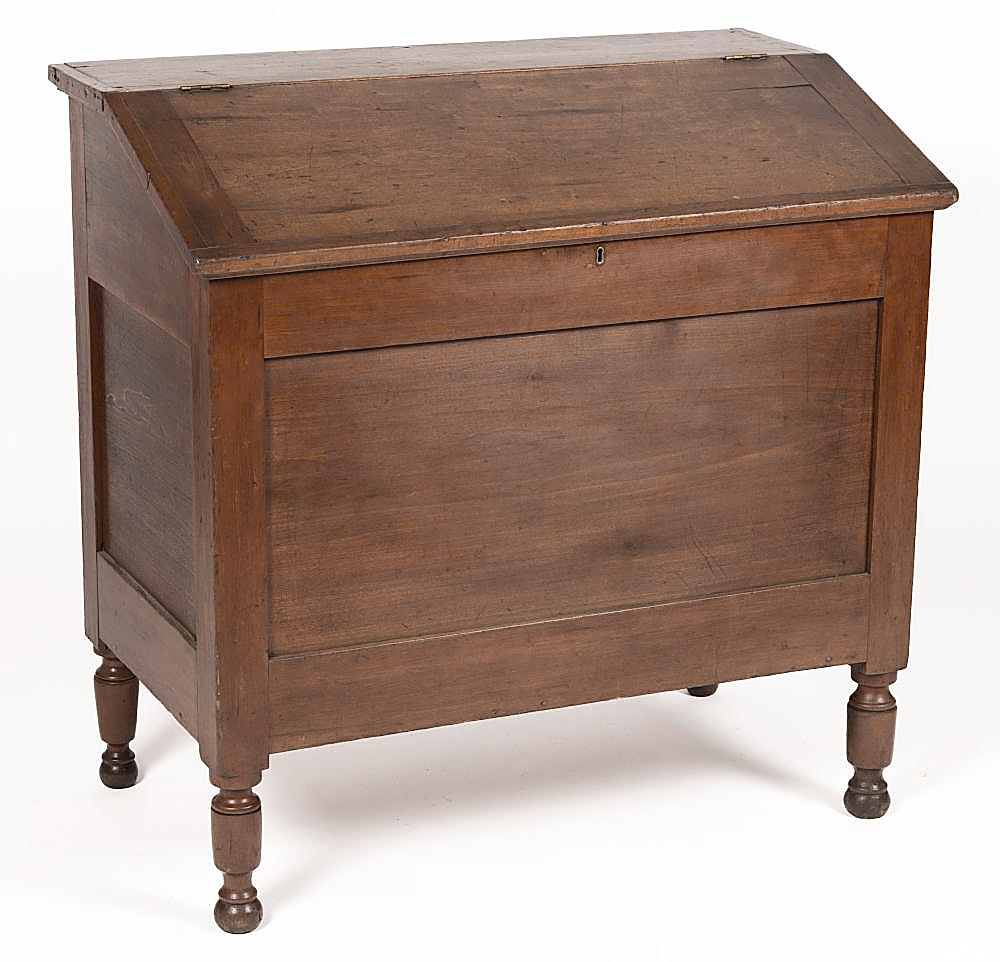
According to Will Kimbrough, this Tennessee cherry sugar desk “was very clean, with no apologies.” Probably made in Shelby County, Tenn., circa 1835, it sold to a private collector in Tennessee for $13,200 ($2/3,000).
A Tennessee cherry sugar desk probably constructed in the same shop as one featured in Derita Coleman Williams and Nathan Harsh’s The Art and Mystery of Tennessee Furniture and Its Makers Through 1850 (1988) was a surprise at $13,200. Considerably rarer than sugar chests, the case piece with hinged slanted lid was comparatively plain, lacking carving or inlay that might have sent the price higher. It sold to a buyer in Tennessee.
The first example of a signed Shenandoah Valley of Virginia punched tin paneled blanket safe Kimbrough had ever seen sold to a Virginia private collector, bidding by absentee bid, for $10,800. Made from yellow pine and poplar, the case retained its original red-painted surface and stencil mark that read, “Made / By / D. Berry.” Scottish-born David Berry (1817-1900) emigrated to the United States around 1820 with his family and was active in Rockingham and Augusta Counties during the second half of the Nineteenth Century; his shop production is discussed in Kurt C. Russ and Jeffrey S. Evans’ Opening the Door: Safes of the Shenandoah Valley (Winchester, Va., 2017). Most similar cases were made for food storage, but the presence of a till drawer inside this one denotes its use for the storage of linens.
A buyer on the West Coast paid $30,000 for Thomas Hill’s (British-American, 1829-1908) landscape of Yosemite that Kimbrough noted for its large size: 53¾ by 40 inches in a modern frame. The atmospheric view of Half Dome at twilight from the Merced River was dated to circa 1875 and was cataloged as typifying “the artist’s mature style, in which he is able to capture the majestic nature of one of the world’s most iconic landscapes.” The catalog also referenced its provenance to the collection of Russell and Doris Evitt, Jackson, Calif.
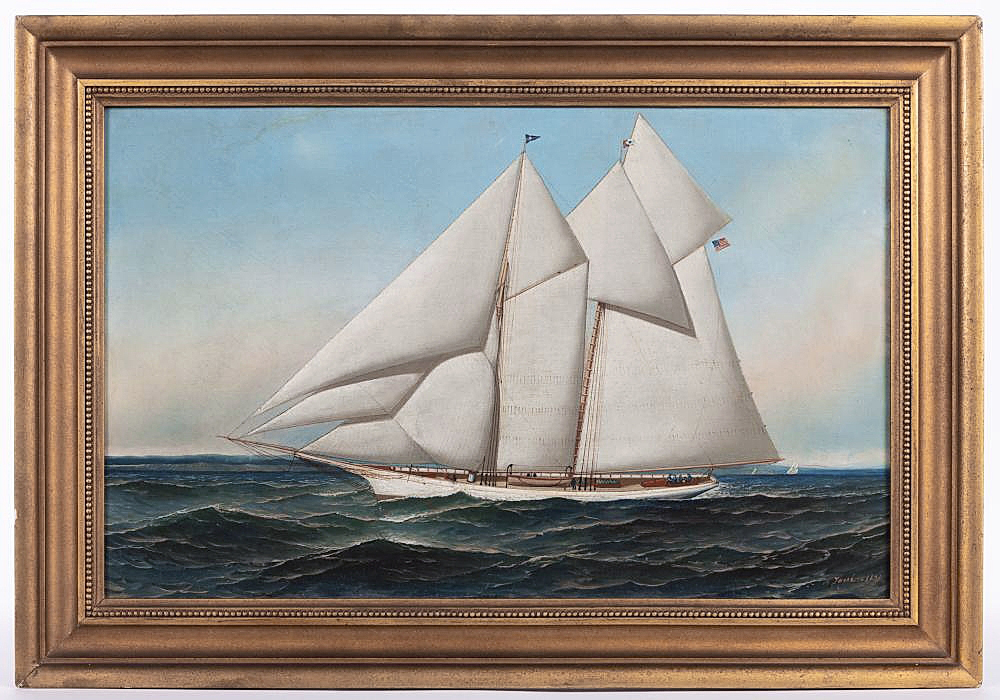
The $18,000 realized by this painting of the racing schooner Dauntless by Antonio Jacobsen was a surprise to Will Kimbrough, who noted despite its comparative small size, the oil on canvas earned $18,000 ($2/3,000).
A strong price was realized for Antonio Jacobsen’s (American/Danish, 1850-1921) portrait of the racing schooner, Dauntless. Painted in 1891, the painting was labeled “by J Jacobsen / Present H.P. Maxwell.” According to the auction catalog, James Gordon Bennett Jr (1841-1918), publisher of the New York Herald, acquired Dauntless, which he outfitted as a racing schooner in 1867. Though the oil on canvas composition was just 13½ by 21 inches (sight size), it sailed to $18,000.
Articles related to the Civil War, particularly ones with connections to famous — or infamous — historical figures are perennial favorites. This was played out in a number of lots throughout the sale, most prominently with a double-barrel shotgun owned by the Confederate Colonel John Singleton Mosby (1833-1916), who commanded the 43rd Battalion, Virginia Cavalry, also known as Mosby’s Rangers or Mosby’s Raiders. Mosby earned the nickname of “Gray Ghost” for his quick raids and ability to elude the Union Army. Kimbrough acknowledged Mosby has a bit of a cult following among collectors of Civil War memorabilia and would have carried the gun — likely one he owned prior to the War — in the first year of the Civil War before more appropriate weapons would have been issued to soldiers. A private collector paid $21,600 for it.
Another Civil War relic, which Kimbrough thought might be the rarest object in the entire sale, was a First National pattern Confederate Civil War-period flag made entirely of silk, with 13 embossed-foil paper stars in the canton. An astonishing survivor because of the frailty of the materials, the flag was accompanied by a note that read, in part, “Confederate flag…home from N.C. by…in 1867.” According to the catalog note, the “First National” flag pattern was adopted by the Confederate Congress in March 1861, first with just seven stars for seceded states, then by December 1861, it featured 13 stars, for the 11 seceded states, with two additional ones for Kentucky and Missouri, both of which had split loyalties. The flag came from a private estate collection in Connecticut and was acquired by flag dealer Jeff Bridgman for $18,000.
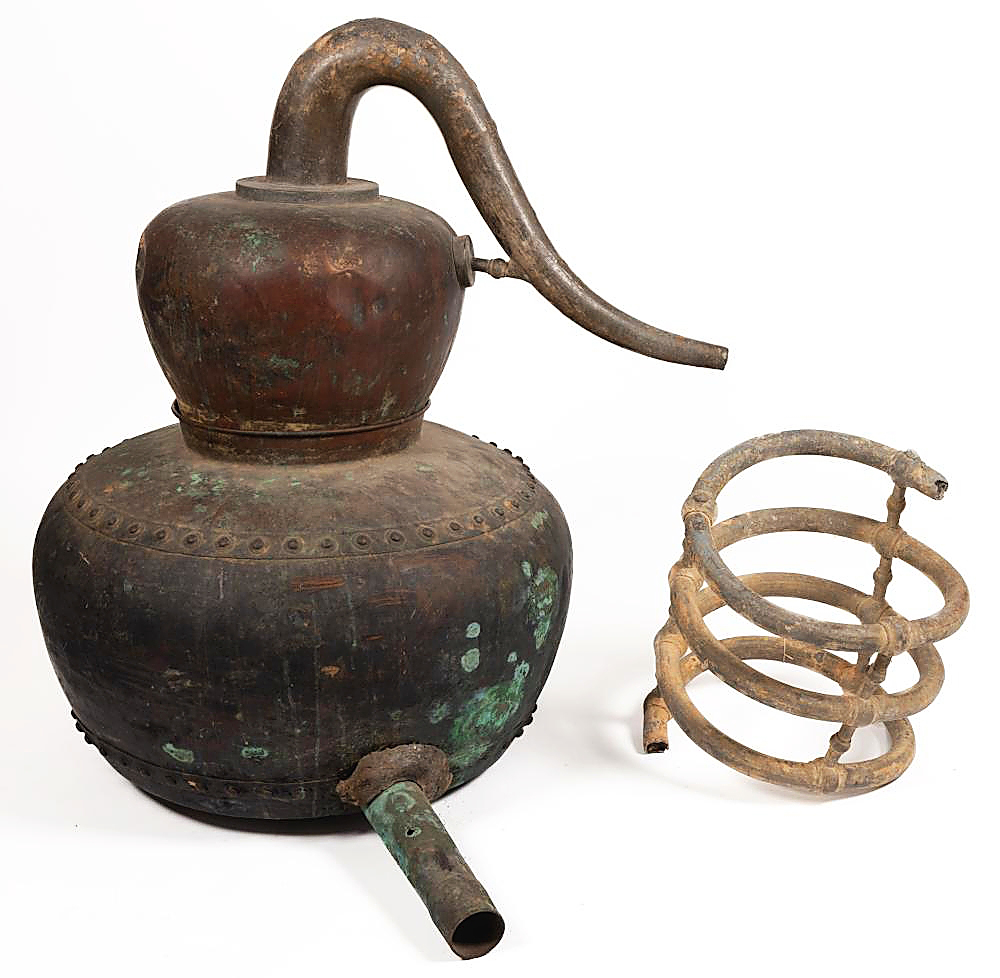
“Having the history made all the difference” noted Will Kimbrough, who said this early Nineteenth Century copper moonshine still, made in Mecklenburg County, Va., had a wonderful original patina. He confirmed it had been acquired by a private East Coast collector, bidding online, for $12,000 ($800-1,200).
A private East Coast collector bidding online paid $12,000 for a copper moonshine still from Mecklenburg County, Va., which included in its provenance Brunk Auctions, Old Salem Museum & Garden and Winston-Salem, N.C., dealer Frank Horton, as well as a history of descent in the family of Mrs Burgir Simmons of Mecklenburg County.
The hands-down feel-good story of the weekend was the reuniting of a pair of doors that had once stood at the entrance to the Afro-News in Baltimore, Md., with the publication, which is still in existence today. Reportedly discovered in a Baltimore salvage yard, the 92-inch-tall doors, which had glass panels reading “The / AFRO / 8:30 A.M. – 5:00 P.M. / DAILY / NAACP / 2nd Floor” dated to circa 1890 and remained otherwise unrestored except for having been later enclosed in a custom wood frame. Also known as The Baltimore Afro-American, the paper was founded in 1892 by former slave, John Henry Murphy Sr, and is the national’s oldest continually running African American-owned newspaper. It was purchased by Afro Charities with members of the organization in attendance.
Jeffrey S. Evans & Associates’ next Americana sale is scheduled for August 24-26; the firm will present a single-owner collection from Richmond, Va., September 22-23.
Prices quoted include the buyer’s premium as reported by the auction house. For information, www.jeffreysevans.com or 540-434-3939.

